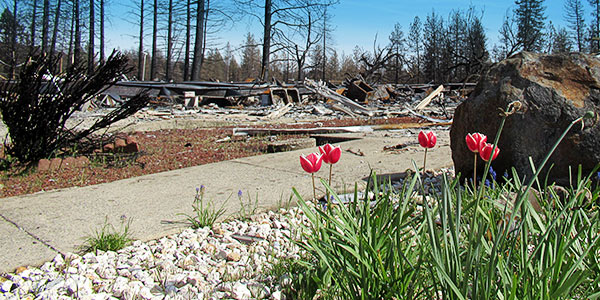By Hudson Sangree
The judge overseeing PG&E Corp.’s bankruptcy case will probably get an earful Tuesday from lawyers advocating for two warring reorganization plans.
One was drafted by PG&E and its utility subsidiary Pacific Gas and Electric, the debtors in the case. It proposes using $14 billion in new equity financing to pay off wildfire claims and to emerge from bankruptcy by June, in time to take advantage of a new $21 billion wildfire recovery fund established by the California State Legislature. (See PG&E Offers $16.9B for Wildfire Claims in Chap. 11 Filing.)
The other is by PG&E’s unsecured bondholders, which recently partnered with fire victims. The bondholders propose injecting billions of dollars of cash into PG&E and paying $24 billion to settle wildfire claims in exchange for a controlling stake in California’s largest utility and full payment of their notes.
The bondholders and victims made an impassioned plea for their plan in a joint filing Thursday. It says PG&E’s proposal essentially is a sham offer intended to delay proceedings while benefiting one of the utility’s largest shareholders. That shareholder, a high-risk hedge fund from Boston called Baupost Group, bought up billions of dollars in claims from insurance companies, known as subrogation claims, which PG&E recently agreed to settle for $11 billion. (See PG&E and Insurers Agree to Settle Wildfire Claims.)
(Under PG&E’s plan, fire victims would get about $8.4 billion for damages stemming from November’s Camp Fire, the deadliest in state history, and a series of fires in Northern California wine country in October 2017.)
That means even if Baupost loses money on its PG&E stock, much of which it bought for three or four times its current worth, the hedge fund can still make a killing on PG&E’s payments for fire damages, the bondholders and victims argued.
“The settlement of the subrogation wildfire claims will enrich Baupost enormously at the expense of individual wildfire victims that have suffered actual loss,” the joint motion says. “Baupost is reported to hold more than $3.3 billion in subrogation wildfire claims, much of which, upon information and belief, was purchased at approximately 35% of face value. [PG&E’s plan] would pay Baupost’s claims at roughly 59% of face value, allowing it to reap hundreds of millions of dollars in profit from the debtors’ plan, at the expense of actual wildfire victims.”
PG&E said in a news release that the plan by bondholders, led by Elliott Management Corp. of New York and fire victims’ lawyers, is “a blatant attempt to unjustly enrich the noteholders who proposed it. The Elliott proposal would cost all PG&E customers billions of dollars in additional interest payments over 15 years – while providing an unfair windfall for the noteholders and plaintiffs’ attorneys.”
The bondholders and fire victims, called the Ad Hoc Committee of Senior Unsecured Noteholders and the Official Committee of Tort Claimants, asked U.S. Bankruptcy Court Judge Dennis Montali to end PG&E’s period of exclusivity, the time it has to file its own reorganization plan without interference. That period is set to end by the end of this month if Montali doesn’t extend it.
The judge will have to begin to sort through the arguments at Tuesday’s hearing in San Francisco. The parties to the case are all trying to move it along so PG&E can benefit from the state wildfire fund.
The California Public Utilities Commission, which also must approve a reorganization plan, will need months to consider it, adding to the time pressure. The CPUC is scheduled to consider a proposed order to begin an investigation of PG&E’s reorganization plan, and its effects on ratepayers, at its meeting Thursday.



